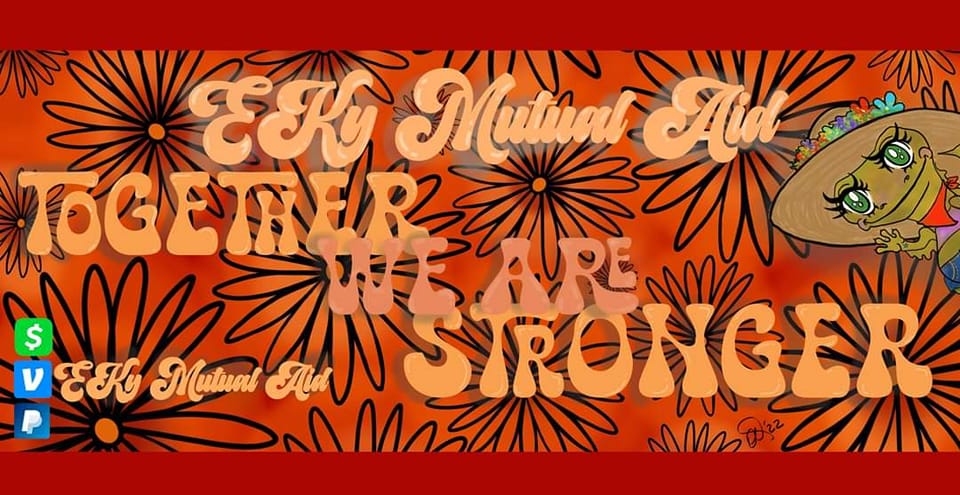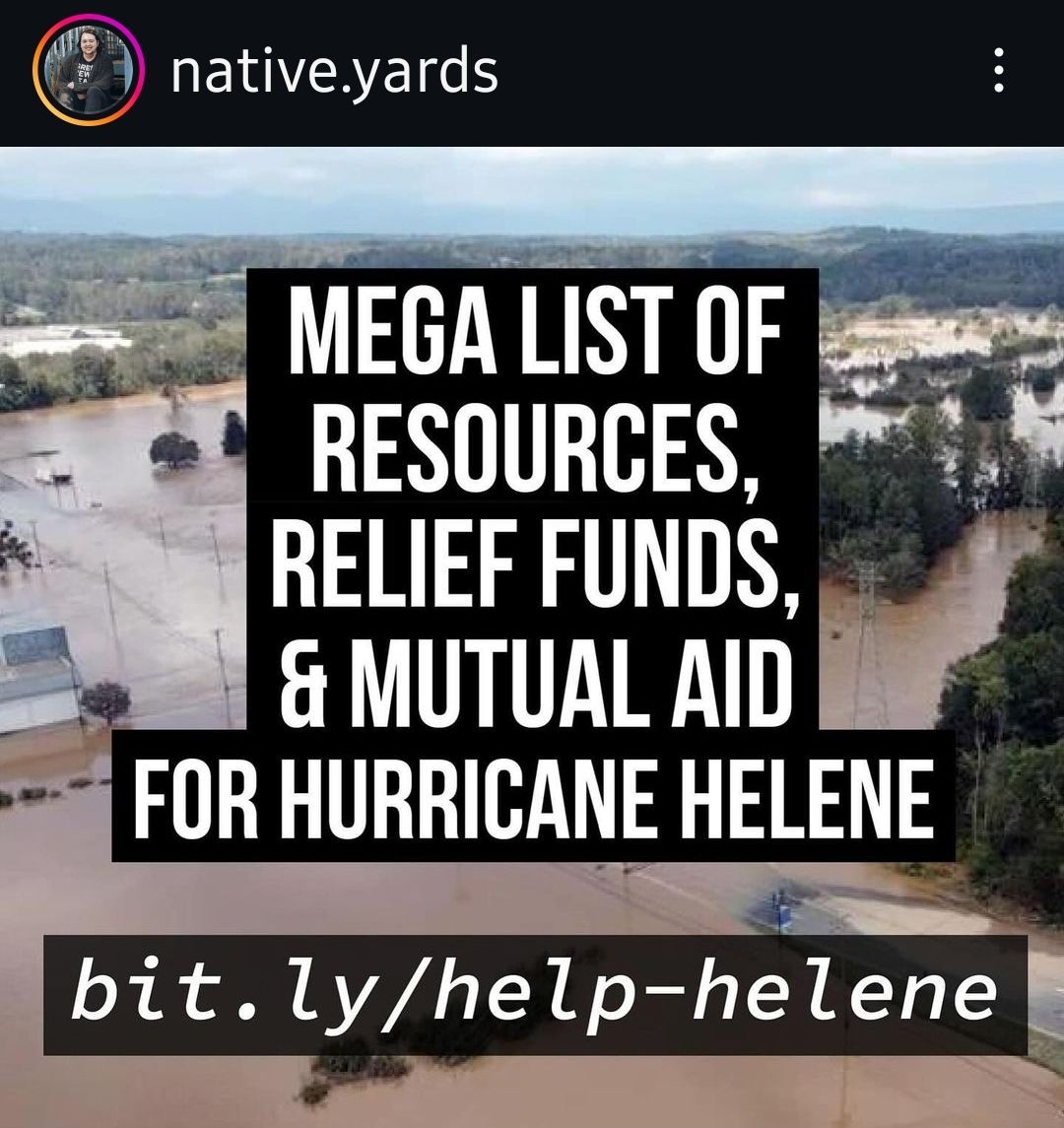By Mike Templeton
With the recent needs in southern Appalachia due to Hurricane Helene, the Urban Appalachian Community Coalition has worked to provide information about aid groups. These range from official government assistance programs to local organizations whose aim is to provide help to people during all kinds of emergencies. These official aid and assistance groups do great things, but at the heart of all of these things is the simple form of assistance known as lending your neighbor a hand. This simple and unofficial form of help is what forms the basis of what falls under the broad heading of mutual aid.
Mutual aid is one of those things we see in the news or passing across our screens as we scroll through social media. It seems like something quite obvious, but there is a philosophy and a history behind mutual aid that may surprise you. Mutual aid groups have been at work in Appalachian life and cultural for decades, in one form or another. A people who have had to build on self-reliance due to the isolation of the mountainous terrain are deeply attuned to the process of mutual aid even before there were groups in and around the Appalachian region that called themselves by those terms. An article in Belt Magazine from 2020 reported from the heights of the Covid-19 pandemic and how it impacted the Appalachian region of Southeastern Ohio. The article explains how people rural regions need to rely on each other in the absence of official assistance and tells is that “Groups for mutual aid—the voluntary exchanges of services and goods—have sprung up across the country in response to the pandemic. But in Appalachia, those networks and exchanges were always here.” Mutual aid is a part of Appalachian life and culture.
The term mutual aid actually comes from Russian philosopher Peter Kropotkin who saw the tendency toward providing mutual assistance as a feature of human evolution. These kinds of social evolutionary theories are discredited now for a variety of sound reasons, but the belief that human societies function best when people make provisions for each other and especially for those most in need has remained a sound premise. Kropotkin explained in his master work, Mutual Aid: A Factor of Human Evolution, that “the mutual-aid tendency in man has so remote an origin, and is so deeply interwoven with all… of the human race, that it has been maintained by mankind up to the present time.” In essence, he believed that the tendency to provide for each other, especially during times of crisis, is a feature of human culture so deeply interwoven into who we are that it functions as a natural fact.
Over the decades, others have revised Kropotkin’s initial thesis to show that societies that follow a basic tendency for mutual aid prosper, and those that rely entirely on competition simply do not survive. Mutual aid benefits all of us, even if we are not the direct recipients of the aid that is provided. It is the belief in mutual care that is the key to the success of mutual aid and cultures that rely on it. Professor Dean Spade at the Seattle University School of Law, in his book, Mutual Aid: Building Solidarity During this Crisis (And the Next), describes mutual aid as “survival work” in which ordinary people pool resources and abilities to provide for each other during crisis situations. Often this kind of work is initiated by failures on the part of governments and official social support agencies.
Since roughly the middle of the 20th Century, many of us have become used to seeing aid in the forms of a combination of government agencies and large groups such as the American Red Cross as sources for help for those who have fallen victim to natural disasters and people who are generally in need. We are all watching as the Federal Emergency Management Administration (FEMA) provides assistance to hurricane and flood victims. But help has historically come from those around us, and on extremely local levels, it is the helping hands of neighbors who are often the most effective. Local people understand local needs far better than huge organizations that may not have any real ties to an area. As the politics and mood of our current age drive us toward increasing privatization, mutual aid has emerged as something far more significant that one may have known.
Mutual aid has been a feature of Appalachian life and culture for decades. It likely dates from the time since folks began moving up into the hills and mountains. Rural life has always been cut off from the main sources of assistance that many people rely on in urban areas, and looking after each other has long been a part of life in the Appalachian region. Misty Skaggs is a writer and artist who has also come to be the most visible person for Eastern Kentucky Mutual Aid. Skaggs has said of Eastern Kentucky Mutual Aid: “We’re just hillbillies helping hillbillies.” It seems that simple to the people involved, EKY Mutual Aid began during the 2020 pandemic, and it is one of the primary engines of mutual aid for the current crises following the floods from Hurricane Helene. Alison Stine muses on the power of mutual aid in her article in Belt Magazine as she tells that when the time comes to remake the world after tragedy and calamity, “Make it a place where the community is only as strong as its weakest member, and where help is given, as much and as often as it can be. Make it like Appalachia.”

The Urban Appalachian Community Coalition has been working toward forms of mutual aid since its beginning and before, going back to the earliest days of advocacy on behalf of urban Appalachians. The notion of reaching out some helping hands to those in need is simply a part of who we are, and this kind of community support has always been a feature of Appalachian life and culture. To us, it is nothing new. To others, mutual aid may appear novel. In any case, it works; life and community are always made better when all of us help each other.
There is still a tremendous need for help for flood victims in the Appalachian region. Eastern Kentucky Mutual Aid is a great resource for helping people all over the region. They maintain resources for direct assistance as a list of other aid groups throughout the region. You can follow the Eastern Kentucky Mutual Aid Facebook group at this link: https://www.facebook.com/groups/2557126217948530/?hoisted_section_header_type=recently_seen&multi_permalinks=3053230405004773.
Michael Templeton is a writer, and independent scholar. He is the author of The Chief of Birds: A Memoir published with Erratum Press and Impossible to Believe, forthcoming from Iff Books. He is also the author of Collected Apoems, forthcoming from LJMcD Communications and the awaiting of awaiting: a novella, with Nut Hole Publishing. Check out his profile in UACC’s Cultural Directory. He has published numerous articles and essays on contemporary culture and works of creative non-fiction as well as experimental works and poetry. He lives in West Milton, Ohio with his wife who is an artist.

